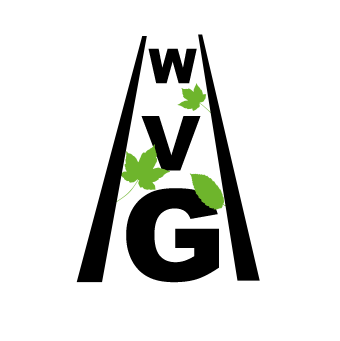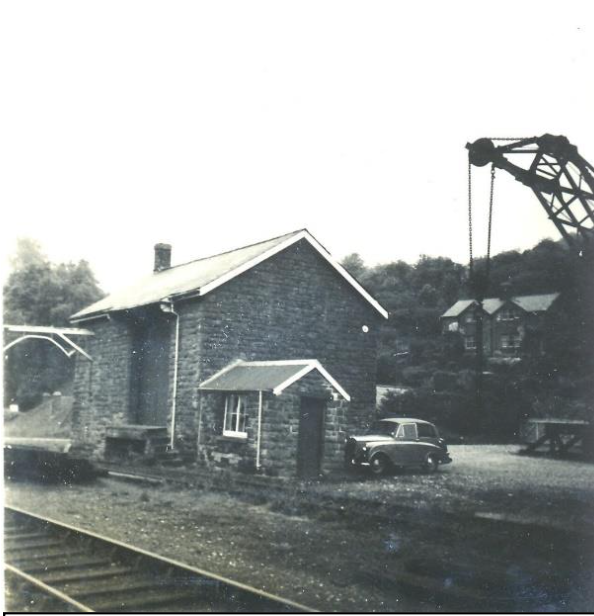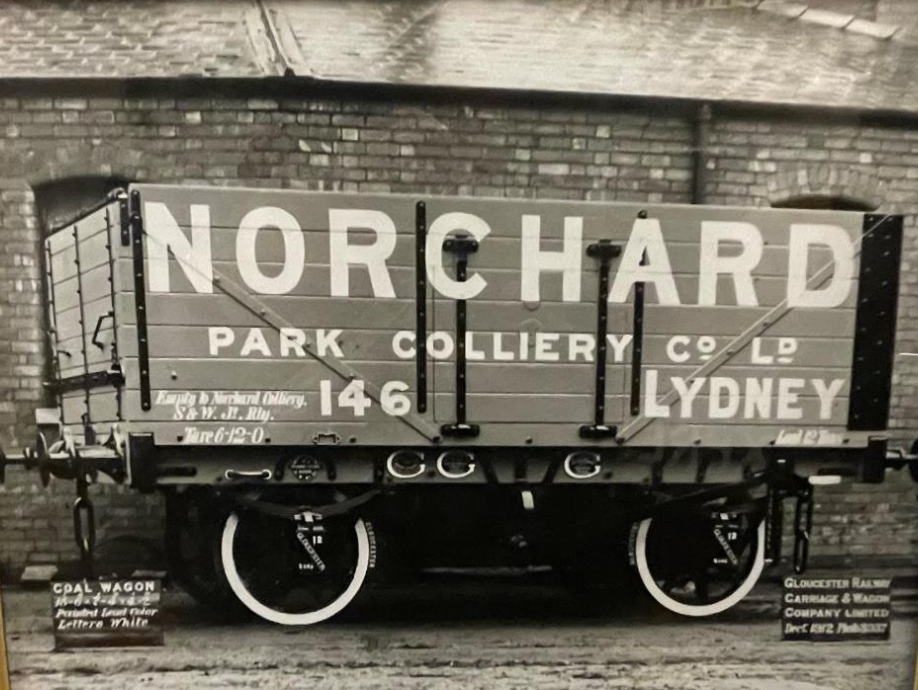History of the Wye Valley Railway
Freight Traffic and Wagons
Freight carried by the Wye Valley Railway
There is an old railway saying that ‘goods provided bread and butter -passengers only the jam’.
To emphasise this, in 1926 there were 88,500 wagons on the GWR when the coaches were much less in number.
Passenger services ceased on 5 January 1959. Tintern and Redbrook station stayed open for goods and parcels until 4 January 1964. The last train to use the line departed from Dayhouse Quarry, Tidenham in September1992.
Two goods tickets: the top one from the Patent Nut and Bolt Company to Tintern Abbey Tinplate Company dated 1882. The lower one, a wagon load from Paddington to the Abbey Tintern Tinplate (works) dated 1881.
The Directors expected that a considerable trade would be generated by the Wireworks in Tintern. But in March 1883 the directors reported that ‘It was hoped that much, if not all the wireworks traffic would now be carried by the main line. Instead ofgoing by water ‘as a large portion does at present’. Production started in 1880 and finally ceased in 1900. The Wireworks railway trade clearly did not meet expectations. More information is contained in the section on ‘The Wireworks Branch.’
The only other major industrial users of the railway apart from the quarries was the Redbrook tinplate works which continued to use rail freight from the opening of the railway until 1962 when the works closed. Continuous innovation kept the company in business which employed up to 500 people. Raw material was delivered by rail to the works and wagons of tinplate despatched to Metal Box factories and for shipment to Newport and Cardiff docks.
The use of the railways by the quarries is covered in the section on ‘Quarry Traffic’.
Normally two goods trains a day were timetabled. The guard’s van or the guard’s compartment of passenger trains were used for parcels, newspapers and relatively small consignments.
Goods and parcels traffic facilities were provided at each of the four stations that were built when the line opened : Tidenham, Tintern, Bigsweir later known as St. Briavels and Redbrook. For parcels and packets the railways operated much as DHL operates today accepting a package at a station and delivering it to the recipients door.
The records of freight carried are contained in waybills which are a list of goods carried on each train. The Great Western Trust has many thousands of these records but unfortunately, they are not yet catalogued. So, we have had to turn to other sources. Tintern was the most significant station and examples of the freight traffic they handled are given below.
Tintern station 1904 with milk churns ready to be loaded into the guard’s van
(H W Paar collection at the IRS archive)
Milk in churns marked with the farmer’s name carried fresh milk as far as Bristol. The churns were washed and then returned. The farmers received a higher price as a result but locally prices rose. On a similar branchline to the WVR a local person complained that it was not possible to buy a ha’penny of milk anymore. Some people benefitted from the coming of the railway. Others did not.
Tintern station did not have a supply of drinking water so it delivered from Chepstow twice a day in milk churns.
Advertising notice at Crawcombe Station
(Kev Daniels)
The station porter delivered sausages, salmon (wrapped in raffia bags for protection) for the Abbey Hotel and cakes to the local shops including Lyons cakes for Williams &Cotton. Palethorpes, sausages were delivered for S.Jones the Butcher.
Palethorpes was founded in 1852 and ran an extensive national network using their own railway vans. It is likely that a van load was delivered to Bristol or Chepstow and then separate smaller loads sent to branch line stations.
Palethorpes 3-axle van built at Swindon 1936
(CC BY-SA 2.0 Hugh Llewelyn)
GWR started road services in 1903. Lorries brought goods to and from Tintern station. One of these was 3-wheeler. Another was a lorry with a hoop and canvas cover. Meal and cattle cake was stored at the station in an old shed and then delivered locally.
GWR 3-wheeler Dicot Railway Museum
(Martin Scott)
Barrels of blackberries and plums were despatched from Tintern when in season to a jam factory. Canoes arrived at Tintern for group holidays on the Wye. After use they were returned usually to the hire centre at Lechlade on the Thames.
A regular customer at Tintern was Mr Freeman of Brockweir, who used to send exhibits to the Fur & Feather Show in London such as his prize rabbits.
Pit props were brought down to Tintern from the Forest of Dean by the Forestry Commission, potatoes were also another crop loaded into the goods wagons.
Mr Rowe of Catbrook despatched his greyhounds to races all round the country from the station.
The HF holiday house at Tintern would have generated a large seasonal traffic of ‘Luggage in Advance. This would have been sent in guards vans or, quite possibly, in a dedicated parcels van.
In addition to motorised delivery from the stations, bicycles were used by station staff such as porters.
There were cattle pens at Tintern station for the livestock trade.
Delivery Bicycle on display at Wiliton Station
(Kev Daniels)
The largest amount of freight handled by Tintern Station was limestone ballast from Tintern Quarry. Empty wagons were deposited at the quarry and loaded wagons coupled to the engine and dropped off in Tintern the sidings. The engine then went on to Monmouth returning later with the goods train. It then coupled up with the ballast wagons and proceeded south.
It is also possible to make reasonable assessment of typical freight carried on the WVR by reference to the goods carried by the steam yacht, La Belle Marie. This yacht operated from Brockweir to Bristol every two weeks between 1904 and 1911 successfully competing with the WVR which would otherwise have carried the cargoes by rail. It supplied the Bristol market seasonal produce such as apples, pears and preserves, fish (salmon, trout, adult eels and elvers), cheese , butter, honey and cider with corn, barley, hay , charcoal sheep and pigs. Coal and other commodities made the return trip including provisions for the general store.
Glass and other fragile material were carried in Shocvans;
Station facilities for goods and parcels traffic
When the line was opened four stations were built: Tidenham, Tintern, Bigsweir later known as St. Briavels and Redbrook. All these stations had freight facilities which were similar. Halts were added to the line later, but none had the facilities to handle freight.
A typical arrangement would have a goods shed, a 30 cwt hand operated crane, sidings, a cattle pen and a loading gauge.
Redbrook: goods shed, crane and loading gauge 29.5.62
(Geoff Mead)
Tintern: pannier tank engine with 7-plank wagon, goods shed, ballast wagon waiting collection with crane just visible above 23.3.63
(Geoff Mead)
30 cwt hand-operated crane at Redbrook 25.9.62
(Geoff Mead)
Tidenham: Loding Guage. If wagons did not foul the gauge, they were allowed on the line 2.6.62
(Geoff Mead)
Wagons
A typical train formation comprised a mix of open wagons, vans of various specialised types and the brake van.
A mixed goods train: Collet 74xx class 0-6-0PT no. 7403, seen with the daily pick up of goods at Tintern station. Summer 1963. The first van could be a MINK covered goods.
(John Levsey (with permission)/Monmouthshire Railway Society collection)
Parcels and other goods traffic that would not fill a wagon were carried in the guard’s van.
When freight traffic began on the WVR it was largely carried by 2-plank (8 ton capacity) open wagons which were gradually supplemented and superseded by 3-plank (9 ton capacity) and 4-plank wagons ( 10 ton capacity) then 5-plank wagons in 1902. From 1904 all new wagons were 7-plank. Planks were most often 7in wide by 2 ½ in thick deals of pine. During 1919-21 old single, two and three plank wagons were condemned at rate of more than 1500 a year being replaced by new open wagons and vans although for many years all type of wagons were still operating together.
5-plank . Open Goods Wagon
(Creative Commons 3.0 Severn Valley)
Private wagons such as the 7-plank wagon below may well have travelled over the WVR.
Private 7-plank Coal Wagon photograph displayed at the Dean Forest Railway Museum
(Martin Scott)
In order to give some protection from the elements certain wagons were fitted with a raised bar running down the length of the wagon on which a tarpaulin was fitted. However, this waterproofing was not durable giving rise to covered vans being employed for moisture sensitive freight e.g. sacks of flour.
Specialist wagons include cattle trucks which also carried pigs and sheep. They were well ventilated. Early types became available from 1888.
GWR cattle wagon 1924
(Mike Haden)
Ventilated fruit vans may have been deployed on the WVR in there was sufficient demand during the season. If a fruit van could not be filled, then it was likely that the fruit was conveyed in barrels. The first fruit ventilated vans specifically for the conveyance of fruit were built by the GWR in 1890. These first vehicles were fitted with a braking system to run in passenger trains so they could carry fresh produce over longer distances.
Ventilated Fruit 1937 Severn Valley Railway
(Andrew Jenkins)
In the early days no trains were fitted with vacuum brakes, instead handbrakes were fitted to individual wagons and trains conveyed brake vans where guards had control of screw-operated brakes. The first goods wagons to be fitted with vacuum brakes were those that ran in passenger trains carrying perishable goods such as fish. Some ballast hoppers were given vacuum brakes in December 1903, and some general goods wagons were constructed with them from 1904 onwards, although unfitted wagons (those without vacuum brakes) still formed the majority of the fleet on 1 January 1948 when the railway were nationalised
The Great Western brake van (given the telegraph code of 'TOAD') had a large cabin extending about two-thirds of the length of the van, with the remaining 'veranda' open on three sides but covered with a roof. Full length footboards and hand-rails allowed the guard or a shunter to ride on the outside during shunting movements. A full height door allowed access from the veranda to the cabin which was fitted with windows in both ends to allow him to see out and keep an eye on his train. Sand boxes were fitted to allow the rails to be sanded if necessary to stop the wheels slipping, and tool boxes, cupboards, a seat and stove were also part of the equipment.
GWR TOAD brake van
(CC BY-NG-ND 2.0 Rob Phillips)
John Simpson riding the footplate at Tintern station with the guard waiting to give clearance for the train to depart.
(John Simpson)
Acknowledgements and sources
Mr Brian Handley for permission to quote from The Wye Valley Railway and the Coleford Branch.
Mr Ian Pope for permission to use the postcard of the La Belle Marie. Information about this steamship was taken from Archive, The Quarterly Journal for British Industrial and Transport History Issue 62.
A History of GWR Goods Wagons by A. G. Atkins, W, Beard, D.J.Hyde and R. Tourret.

















